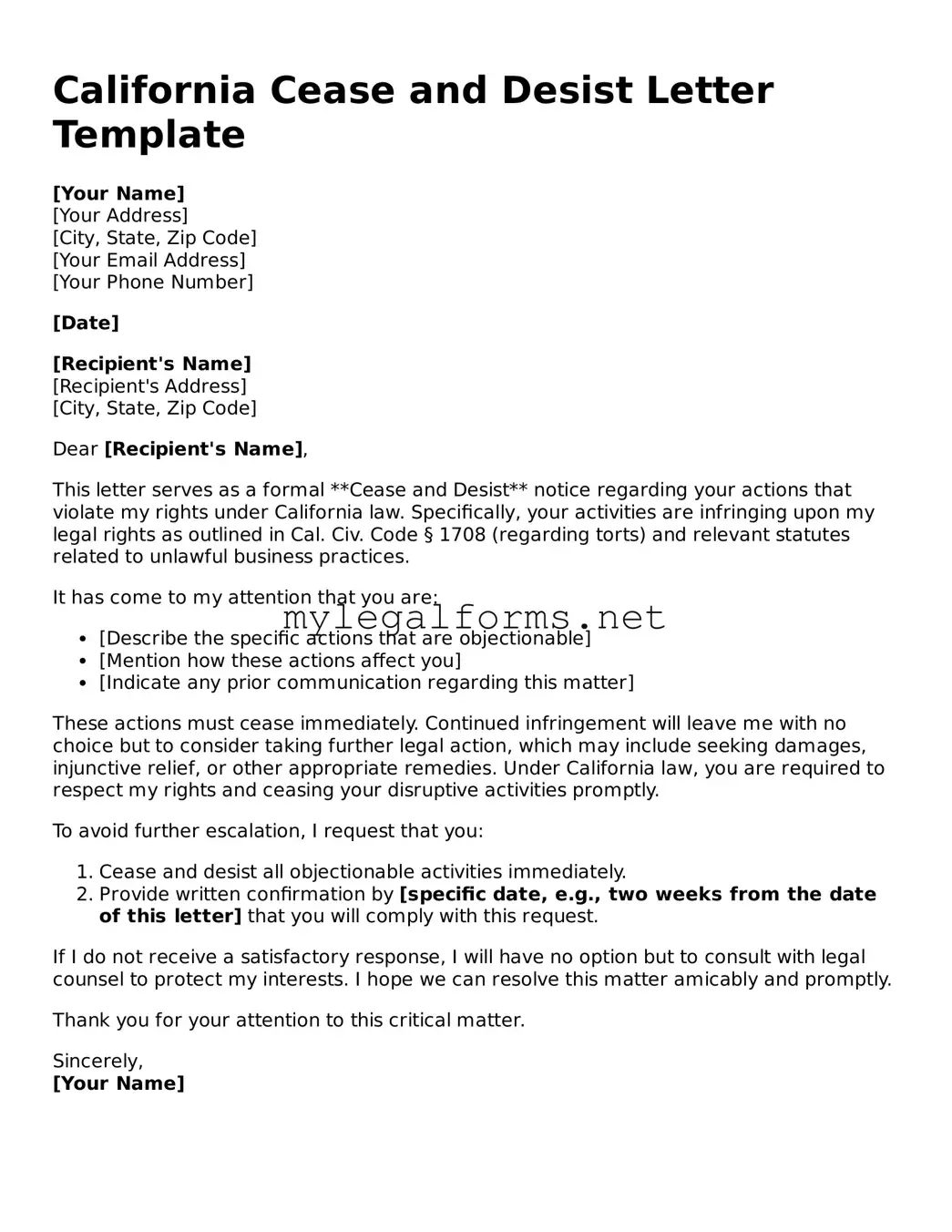California Cease and Desist Letter Template
[Your Name]
[Your Address]
[City, State, Zip Code]
[Your Email Address]
[Your Phone Number]
[Date]
[Recipient's Name]
[Recipient's Address]
[City, State, Zip Code]
Dear [Recipient's Name],
This letter serves as a formal **Cease and Desist** notice regarding your actions that violate my rights under California law. Specifically, your activities are infringing upon my legal rights as outlined in Cal. Civ. Code § 1708 (regarding torts) and relevant statutes related to unlawful business practices.
It has come to my attention that you are:
- [Describe the specific actions that are objectionable]
- [Mention how these actions affect you]
- [Indicate any prior communication regarding this matter]
These actions must cease immediately. Continued infringement will leave me with no choice but to consider taking further legal action, which may include seeking damages, injunctive relief, or other appropriate remedies. Under California law, you are required to respect my rights and ceasing your disruptive activities promptly.
To avoid further escalation, I request that you:
- Cease and desist all objectionable activities immediately.
- Provide written confirmation by [specific date, e.g., two weeks from the date of this letter] that you will comply with this request.
If I do not receive a satisfactory response, I will have no option but to consult with legal counsel to protect my interests. I hope we can resolve this matter amicably and promptly.
Thank you for your attention to this critical matter.
Sincerely,
[Your Name]
